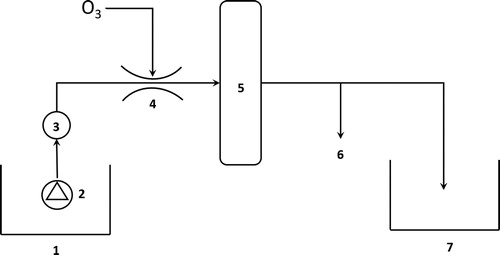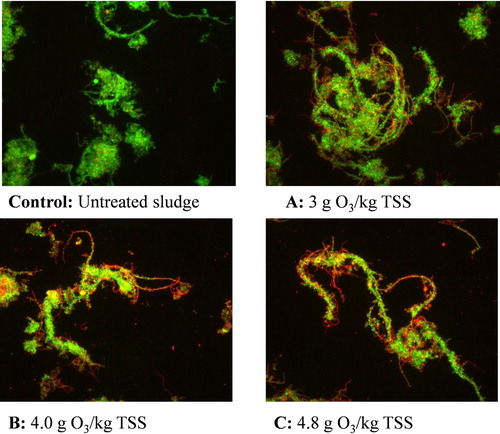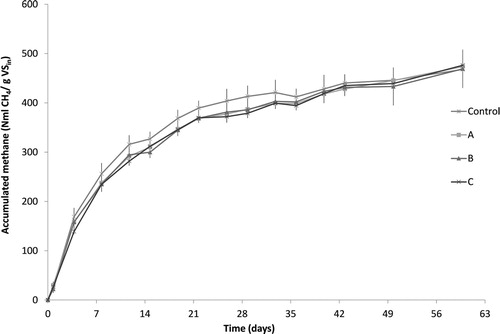Figures & data
Figure 1. Simplified schematic overview of the experimental setup at Klagshamn WWTP.1: Return activated sludge basin of treatment line one 2: Submerged centrifugal pump, 3: Flow meter, 4: Venturi injector, 5: Pressurized reaction vessel (7.9 m3, HRT: ∼18 min), 6: Sample point, 7: Aerated basin of treatment line one.

Table 1. Analysed MPs.
Table 2. Sludge characteristics before and after ozone addition.
Table 3. Characteristics of the sludge as assessed in the quantitative and semi-quantitative microscopy evaluations.
Figure 2. Live/Dead® fluorescence microscopy images of the untreated (control) and ozone treated return activated sludges (A–C).



